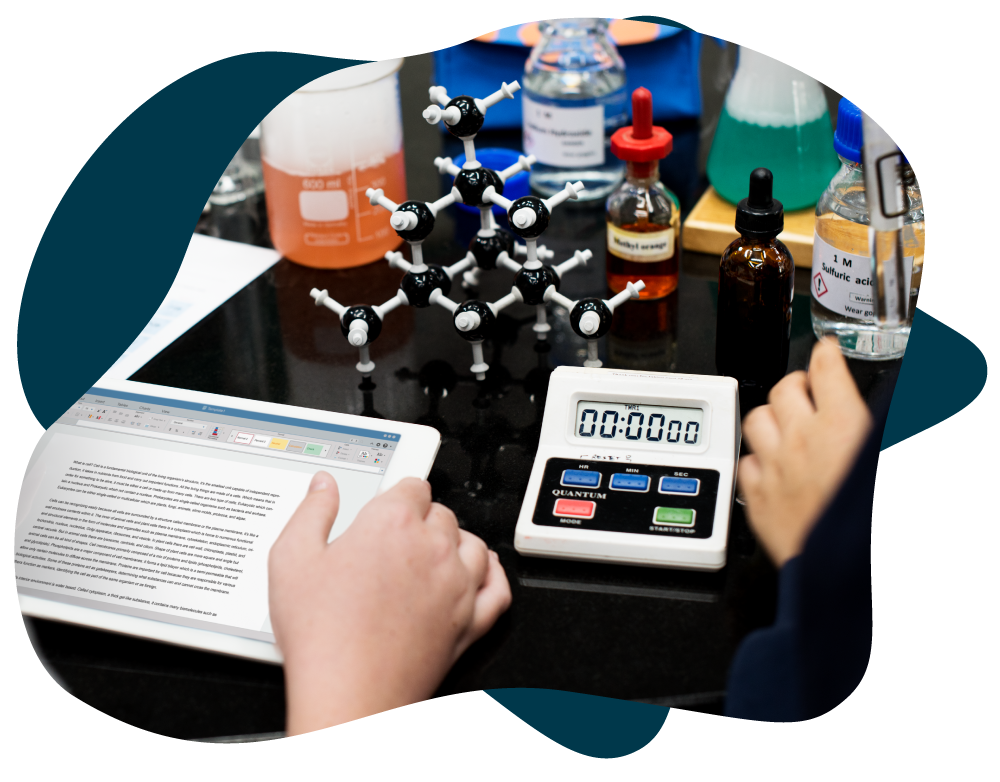Read and follow these safety requirements carefully when preparing your display for the fair!
The project maximum size is: 3.5 metres from the floor, 120 cm side to side and 80 cm front to back.
The safety inspection team will check all projects after they are set up. (Not applicable during a virtual fair.)
Those not meeting the WWSEF regulations will need to be corrected before they are accepted for display and judging.
The judges evaluate work that is already completed. Therefore, you do not need to demonstrate exactly what you did; you just need to describe it.
The rules and guidelines listed below are based on those used by Youth Science Canada.
General Safety:
Safety is an essential part of the WWSEF. Precautions must be taken to ensure that no serious personal injury, property damage, or legal action could result.
- Moving parts such as belts, gears, pulleys, and blades must be appropriately attached and shielded.
- Motors must contain safety shut-offs.
- Remove, or otherwise protect, all sharp edges or corners of prisms, mirrors, enclosures, glass and metal plates, etc.
- No compressed gas cylinders are allowed; partial vacuums will be assessed on site by the safety inspection team.
- Keep hoses and/or extension cords within your display space to eliminate tripping hazards.
- Aisles and exits must not be obstructed.
- Projects containing materials and/or equipment that may be hazardous will be restricted to supervised demonstration during judging. At other times, these materials and/or equipment must be stored at the command centre.
- Remote controlled devices, robots, flying devices, and those launching projectiles are not to be activated except with the permission and direct supervision of fair officials.
Fire Safety:
Fire extinguishers of the proper size and rating will be available in the exhibition area.
- Open heat sources are not allowed. (flame, candle, torch, hot plate, etc.)
- Excessive packing material under the table must be contained.
Electrical Safety:
Allowed: Dry cells (Alkaline, NiCad, NiMH, Lithium Ion, etc.) and sealed lead-acid batteries (gel cells).
The following are not allowed.
- Inappropriately grounded electrical plugs or sockets.
- Modifications of CSA approved electrical equipment.
- Wet cell batteries such as lead acid.
Notes:
Electronic equipment created by exhibitors are permitted if they have:
- As low a voltage and electric current as possible.
- A non-combustible enclosure.
- An insulating grommet at the point where the electrical service enters the enclosure.
- All exposed terminals must be covered.
- Pilot light to indicate when the device is powered.
Chemical Safety:
The following are not allowed.
- Toxic, corrosive or flammable chemicals.
- Drugs (both over-the-counter and prescription), cleaners and solvents.
- Radioactive sources and materials (for example, smoke detector sources).
Notes:
- For #2 & #3 above, an original empty container can be used as a substitute in your display.
- The use of substitutes is mandatory. They should be clearly labelled with the name of the substance they represent and the word "simulated". Use food colouring and water to simulate chemicals if necessary.
Biohazard Safety:
The following must be in sealed containers:
- Soil containing organic material.
- Cultures – Petri dishes containing media, Ziplocs with spores, etc.
- Cell or tissue samples (including blood and blood products, except on sealed microscope slides)
Note: Biological toxins are not allowed to be on display. – use and label a substitute.
Images of Humans:
- The project display may include pictures of participants if prior permission has been obtained and is available for judges to check.
- Not allowed: Any device that senses/scans humans so that personal biological and/or other information is compromised.
Note: Projects dealing with forensic science topics must preserve the anonymity of any human victims, and project displays must avoid sensational or gratuitous, macabre images.
Animals and Animal Parts:
- Live animals or micro-organisms are not allowed.
Note: Items naturally shed by an animal or parts properly prepared and preserved (e.g. quills, shed snake skin, feathers, tanned pelts and hides, antlers, hair samples, skeletons or skeletal parts) are acceptable.
Firearms, Hazardous Materials, and Equipment:
The following are not allowed.
- Firearms, ammunition, dangerous goods, or explosives. The manner in which such materials were used in a project may be conveyed through text, photos, video, computers or simulation.
- Images of humans or animals that have been injured by the use of firearms or explosives shall not be displayed. Such images are deemed unsuitable for general public viewing and do not contribute to the scientific value of a project.
- X-ray or hazardous radiation-producing equipment.
- Radioisotopes or compounds containing radioisotopes that emit activity levels above normal background.





